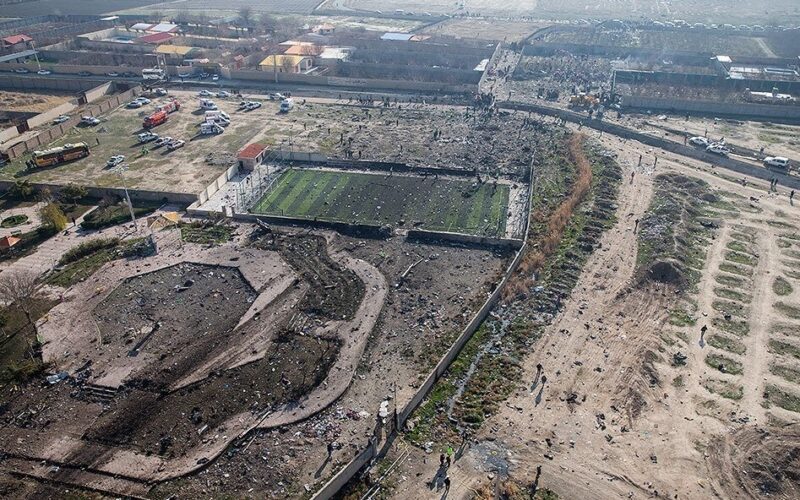In an interim report, the Civil Aviation Organization of the Islamic Republic of Iran believes a “human error” in setting up a radar was the main cause that led the Ukrainian International Airlines Flight PS752 to be shot down by the air defense system of Tehran.
The four links of a tragic chain
On January 8, 2020, a Ukrainian International Airlines Boeing 737 crashed shortly after takeoff from Tehran International Airport (IKA), Iran, killing the 176 people on board. The aircraft had been shot down by two missiles fired by the Iranian military.
The preliminary report released on July 11, 2020, identified four “contributing links in the chain of events” that led to the tragic fate of the passenger flight.
According to the investigators, the incorrect setting of one of the missile systems showed an erroneous flight path to its operator. “After the relocation of one of the air defense units of Tehran, clearly causing a change in its heading, a failure occurred due to a human error in following the procedure of system north alignment,” states the report. “As a result, a 107-degree error was induced in the system.” Because of that mistake, the path of Flight PS752 was shown as heading straight for Tehran, instead of away from the city.
Hours before the crash, the Iranian military had launched over 12 missiles on U.S. bases in Iraq, in reprisal of the death of Qasem Soleimani, the commander of the Iranian special services, in a drone strike. The Iran military was expecting retaliation from the United States.
Given that missile defense systems were on high alert around Tehran that night, the operator considered the flight path as threatening. The missetting of the radar could explain that in the days following the crash, the army reported that the aircraft diverted from its course and was approaching the nearby missile base of Malard.
The operator attempted to report the presence of an aircraft following an aggressive trajectory to the Coordination Center. But an unspecified defect prevented the delivery of the information.
Even with the radar being misaligned, the air defense unit operator still had the opportunity to identify PS752 as a passenger flight and not a combat aircraft, but failed to do so, says the report.
The last and fatal mistake identified by the investigators was the decision from the operator to fire a missile despite having no contact with the Coordination Center. “Under the applicable procedures, if the defense system operator cannot establish communication with the Coordination Center and does not receive the fire command, they are not authorized to fire,” explains the report.
As the aircraft was still being tracked by the air defense system thirty seconds after the first missile was shot, the operator decided to fire a second one. But the interim report says that the concording times of the first missile fuse activation and the termination of the aircraft radio signals seem to indicate that the first shot was the one that proved fatal. Additionally, the weapon platform reported that the second missile had failed to touch its target.
Upon being hit, the Boeing 737 veered right and impacted the ground in a residential area, disintegrating as it skidded on several meters, killing the 176 occupants.

